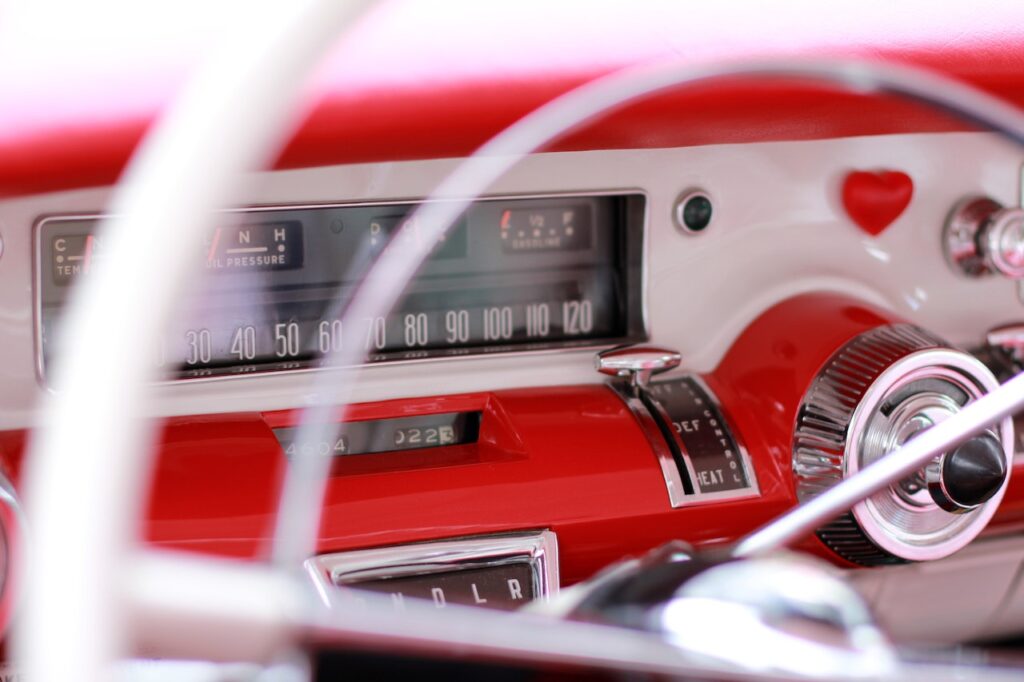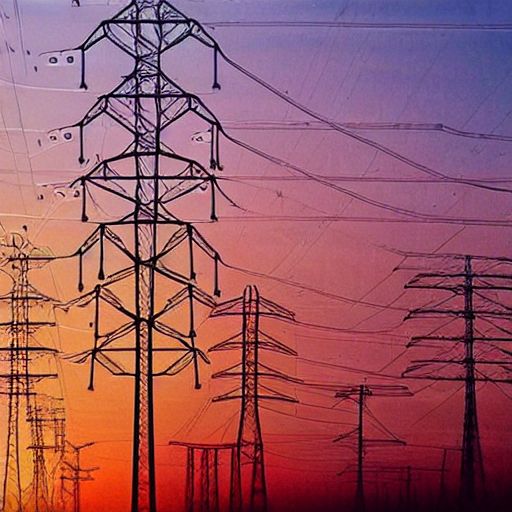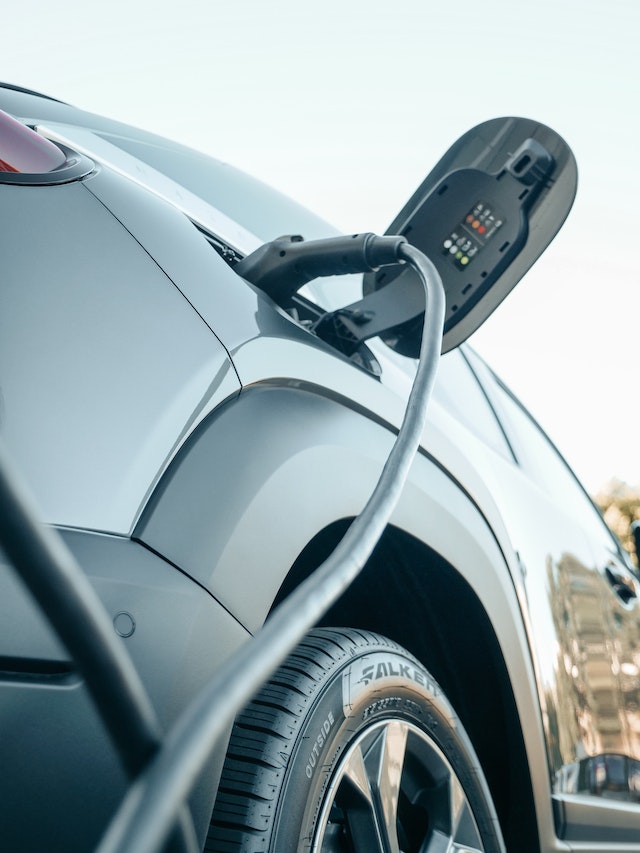Right now, a large part of the automotive industry has decided to enter the EV market with full force. Or, to be more precise, automakers are coming out with a line-up of their own battery-powered cars. If you search for “the future of electric cars” what you get served at the moment is, for the most part, a long list of upcoming new, shiny vehicles from popular brands that motoring journalists can’t wait to test drive.
To some extent, it is primarily a competition for design and exciting new features. In a market-driven economy, that is of course what you can expect.
But a serious discussion about the future of electric cars is about much more than that. The challenges going forwards will include increased efficiency, expanded charging infrastructure, enhanced autonomous capabilities – and possibly the electric motor being fed by another source entirely.
The Future IS Electric – Sort Of, Probably…
Because at the moment, almost everyone – manufacturers and consumers alike – pretty much assume that electric vehicles invariably are powered by a large battery pack that you charge up before setting off. Many governments and organizations have also established that all-out electrification is how it will be. Often with a deadline where internal combustion cars should be a thing of the past sooner rather than later (the years 2030 to 2035 being common targets).

Regardless of how nostalgic we may feel about them, the era of widely used gasoline-driven vehicles is coming to an end in the upcoming decades, whether we like it or not.
However, the critics of EVs have some excellent points. Despite a variety of advances in EV charging technology, longer ranges, and lighter-weight cells, this approach still comes with a host of problems.
And there is a competing technology that gets much less press: the hydrogen car. That is an interesting situation because the hydrogen car is also an electric vehicle at the end of the day! The difference is that the power for the electric motor is provided by a fuel cell that converts the hydrogen to electricity, with the only thing coming out of the exhaust being water vapor.
At a glance, the fuel cell technology also seems to solve many of the remaining Achilles heels with using rechargeable batteries. Fuel cells also have the added flexibility of running on other fuels much more efficiently than the internal combustion engines in today’s vehicles. Renowned manufacturers like Toyota and Honda already produce these kinds of cars.
So why haven’t you heard more about hydrogen-electric cars instead? It does sound like a clear winner.
Well, not so fast. Because this technology also has some challenges to overcome before it becomes a mainstream solution. So let’s quickly look at the strength and weaknesses of both ways of powering an electric motor.
The Major Problems With Battery-Powered Cars
For many intents and purposes, the battery-powered vehicles entering the market soon are just as good and practical to use as the conventional car you are driving right now. In some respects, they are a clear improvement.
For starters, electric vehicles use the energy provided much more efficiently than conventional cars, allowing them to travel longer on the same amount of energy. The vehicles indeed have zero emissions when driving, which can significantly reduce air pollution and improve air quality. They are often also quieter to operate, as the (in comparison) loud combustion engine is missing. In addition, electric cars generally require less maintenance than their conventional counterparts, as they have fewer moving parts and no oil changes are necessary.
However, significant challenges remain. Motor enthusiasts are quick to point out things like limited range (particularly in cold weather), long recharge times (even with “fast” chargers), and high purchase costs.
But more comprehensive problems need to be solved before this technology can truly become what it has set out to be. Here is a short intro to a few of the main ones.
No Cleaner Than The Electricity In The Electrical Grid

While the electric motor is emission-free, the grid power used for charging EV batteries is not. While you can buy electricity from a provider selling “only renewable”, what you get from the outlet will still be a mix of everything supplying the grid. If fossil fuels are in the mix, your new car is still partially running on coal and oil.
While one could argue that it is still an improvement in efficiency (it is), the fact remains that the battery electric car is not a massive improvement for the environment until most of the energy production has indeed switched to renewable alternatives.
To top it off, running more things on electricity instead of petroleum products means we will need more electricity – a lot more! And at the moment, even replacing our current electricity consumption with truly renewable alternatives is going to be a significant challenge.
Manufacturing And Disposal/Recycling
The battery packs in electric cars are heavy and expensive. But the biggest problem with the current technology is that making it requires several precious raw materials such as lithium and cobalt. These are fairly rare, which can make availability a real problem. In addition, they are to some extent mined in ways that are neither eco-friendly nor humane.
Used lithium-ion batteries are considered hazardous waste and require additional resources for proper disposal. Ideally, they should first be refurbished and reused and, at the very end, recycled. Despite the numerous advances in this field, this has yet to be widely implemented.
Building a Powerful Enough Charging Infrastructure

The availability of charging stations, although they are constantly increasing in frequency, is still a big practical issue in many places. Compared to ordinary gas stations, there needs to be more of them.
But switching the entire vehicle fleet to electric will also require significant improvements in large portions of the electrical grid because the current capacity is insufficient for charging many EVs, particularly not if you want to use fast charging.
The fastest chargers currently out there have a power of up to 350 kW, which places a lot of requirements on the local electric grid supplying the juice – not to mention having several such chargers in service alongside each other. In comparison, the service capacity of many homes is below 20 kW.
According to Tesla, “fast” with their supercharger means getting about 200 miles (320 km) of range in 15 minutes. Your typical wall connector would give you up to 44 miles of range per hour charged, with the added benefit that the slower charge is easier on the battery.
The Fuel Cell EVs To The Rescue?
The hydrogen car represents technology that seems to have been the famous “only ten years away” for several decades. However, it is well past the drawing board by now in the form of vehicles that combine an electric motor with a fuel cell.
Put in simple terms, fuel cells are devices that use electrochemical redox reactions*, rather than combustion, to convert the chemical energy of fuels such as hydrogen or methane into electrical energy. Fuel cells are highly efficient since they do not need to convert chemical energy into thermal and mechanical energy first. Furthermore, these cells are less polluting than traditional combustion, as they minimize energy losses and reduce carbon emissions. In addition, if green hydrogen, created using renewable energy sources, is used to fuel the cell, the only emissions are warm air and vapor.
*) Electrochemical redox reactions are chemical reactions in which electrons are transferred from one molecule to another.
The Ultimate Electric Car of the Future?

This type of hydrogen car would seem to solve many of the issues with EVs based on battery technology.
They are zero-emission vehicles. They can provide a lot more range that doesn’t decrease with weather or degradation. They are fast and convenient to refuel. And hydrogen is the most abundant element in the universe.
The above almost sounds too good to be true, and unfortunately, it is. Or at least there is more to it.
Similar But Different Problems
The hydrogen-electric vehicle faces some of the same challenges as its battery-powered counterpart, albeit in a slightly different manner.
The technology is still expensive, and there are also questions about the longevity of fuel cells, of which there are several different types. To stop the fuel cell from deteriorating, sophisticated temperature control and fuel, air, and water flow regulation are necessary.
As for the hydrogen itself, it’s currently mainly produced from natural gas or other fossil fuels, which of course, is anything but clean energy. It can be produced with water and electrolysis, but this requires significant amounts of electricity – preferably from renewable resources. And even then, converting electricity first to hydrogen and then back to electricity is considerably less efficient than using the electricity directly or storing it in a battery.
The infrastructure for the distribution of hydrogen (at the consumer level) is also virtually nonexistent at the moment. With a supply chain similar to the one for petrol and diesel, there would be substantial costs and energy use just to distribute and store the gas.
Complementary EV Platforms
While the technical and logistical issues presented here may seem negative, it is important to remember that many of them can probably be resolved with time. That goes for both technologies.
With batteries, super-effective recycling will be crucial in the upcoming decades. In the future, further technological breakthroughs will hopefully improve performance and sustainability.
And for hydrogen, some of the negative aspects of distribution could be improved by manufacturing the gas as locally as possible – even right at the gas station you go to fill up the tank. Converting sustainably produced electricity to hydrogen whenever there is a surplus in the grid is also one of the least bad solutions to the intermittency of renewables like wind and solar.
It is worth noting that, while converting to hydrogen and back results in some energy loss, the thermodynamic losses are insignificant compared to using direct electricity to heat (or cool) indoor rooms by a few degrees or using gasoline-powered vehicles.
Ideally, the two approaches to electric mobility could complement each other, with various biofuels diversifying the energy palette of the transport sector even further.
The Future of Electric Vehicles
So, with the above in mind, what will the future of electric cars be? That is difficult to say without a crystal ball with perfect reception. Currently, most manufacturers seem to be going down a one-way street towards the battery-electric route. The hydrogen car is presently harder to mass produce, and despite various projects it seems to be lagging behind considerably. With governments and various subsidies pushing for quick results, most production and sales are going to its close rival instead.
On the other hand, large hydrogen production using wind power is, for example, being developed for use in the steel manufacturing industry in Sweden. Hopefully, that kind of development can contribute to eventually making the hydrogen car more commercially viable as well.
In any case, it would be sad for one technology to be side-lined entirely by the car industry. A hybrid solution is likely preferable. Because both approaches to an electric future have their advantages, and by going with just one, we increase the risk of painting ourselves into a corner. Again.

Author bio:
Mikael is a snowboarder (not professional), a computer game enthusiast, and a decent writer when he puts his mind to it. He’s a self-professed nerd who loves the outdoors and exploring the world of technology. He is the webmaster and editor for Ask Us 1st.
